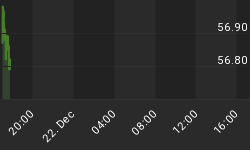Allow me to begin with a generalization. While overly specific predictions about the future are bound to be incorrect perhaps it is possible to make useful predictions about what is NOT LIKELY to happen based on the options that are open to us. Of course the options open to us today reflect and are circumscribed by the decisions we have made in the past, both good and bad - a concept otherwise known as path dependence.
Using path dependence as our model lets ask an important question - "Is it possible for the west to move from where it is today with 1) stagnant nominal growth rates, heavy debt loads, largely insolvent banking and pension systems and unrestrained monetary growth; to 2) sustainable real growth?"
I believe the answer is yes but we still must determine 1) the least disruptive path to take us to this desired outcome and 2) how likely is it for that path to be taken given our current situation.
I would argue that all minimally disruptive paths are now closed to us due to the massive imbalances that central banks & governments - let's call them non-profit maximizers ("NPM's") as shorthand - have created in the economic system. I realize this may seem like a heretical viewpoint to some but NPMs magnify rather than reduce system instability as they are indifferent to losses and they allow risk to accumulate through hidden and, more recently, explicit subsidies. Because all available paths to sustainable growth are now prejudicial to the status quo, NPMs are willing to continue with current risk increasing activities - the quintessential postponing of the day of reckoning.
Unfortunately, this behavior has turned the economy into the ultimate version of an unstable sand pile. The only decision that the NPMs seem interested in making is whether or not to add more grains of sand to the pile in the form of newly created money. This answer is apparently always "yes". The longer such a system continues, the more unstable it becomes. At some point adding merely 1 additional grain of sand can cause unpredictable and catastrophic avalanches to occur - with no way to predict this in advance. If you don't believe me let's quickly examine the global economic sand pile and attendant avalanches that our NPMs have inflicted on us over the last decade - each one on average bigger than its predecessor:
NPM Action: Suppress interest rates/increase money supply
Results: Newly printed money flowed into equity markets
- Dot-com bubble
- Dot-com crash
NPM Action: Suppress interest rates/increase money supply
Results: Newly printed money flowed into real estate markets
- Subsidize real estate risk causing bubble
- Banks package subsidized real estate risk via a range of financial instruments (REITS, RBMS, CMBS etc)
- Real estate prices begin reversion to mean
- Real estate financial instruments are materially overvalued, mark to market causes huge losses
- Banks insolvent
NPM Action: Suppress interest rates/increase money supply
Results: Newly printed money is flowing into commodity markets
- Commodity prices are being driven higher - particularly precious metals, energy and food
- High energy prices act as tax on energy import dependent economies and offset the low interest rate subsidies created by NPMs
- Increasing energy prices will cause western current account deficits to worsen - more downward pressure on currencies
- Newly printed money flows into emerging economies where inflation rises rapidly due to currency pegs
- Inflation, particularly rising food prices, causes political instability in emerging economies - unrest in key oil producing regions creates more upward pressure on oil prices
- Low interest rate policies cause pension-funding shortfalls in west, pension funding shortfalls will have to be back-stopped by the state increasing future debt levels - more downward pressure on currencies
- Low interest rates meant to save banks and support real estate prices now negatively affect the middle classes via commodity inflation
- Artificially low interest rates force central banks to step in to replace increasingly reluctant private investors and purchase large amounts of new government debt issuance - more downward pressure on currencies and upward pressure on commodities
- Insolvent but subsidized banks are able to add more risk to system using newly printed money to speculate in commodities and other hard assets
Let's return to our path problem - how does the west return to sustained, real growth in a low inflation environment? Simple answer - stop adding to the sand pile - stop printing money, reduce the size of government and stop subsidizing risk in the financial sector. Only this will return us to sustainable growth. All the other solutions being bruited about are merely economic equivalents of adding grains to the increasingly unstable sand pile.
Is this likely to happen? No.
I believe we at the point where the entrenched interests of the NPMs and the banking system would rather risk a collapse than accept any necessary economic restructuring. So they will continue to add sand until the "avalanche" is too big and destructive to be ignored. In this environment we continue to focus on direct investments in cash generating, hard asset investments as both capital preservation and real return tools.
Kind Regards















